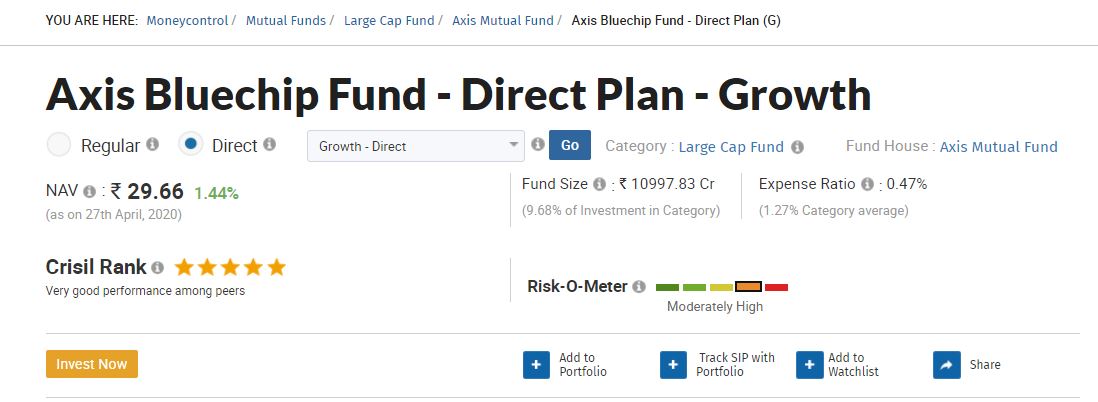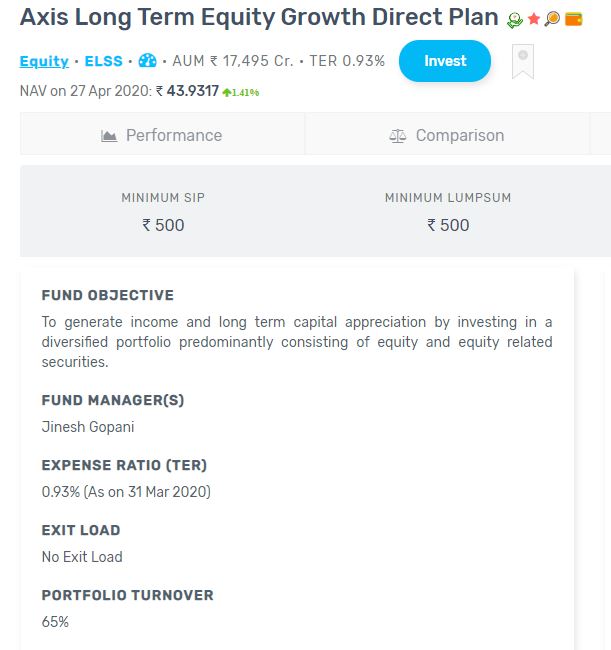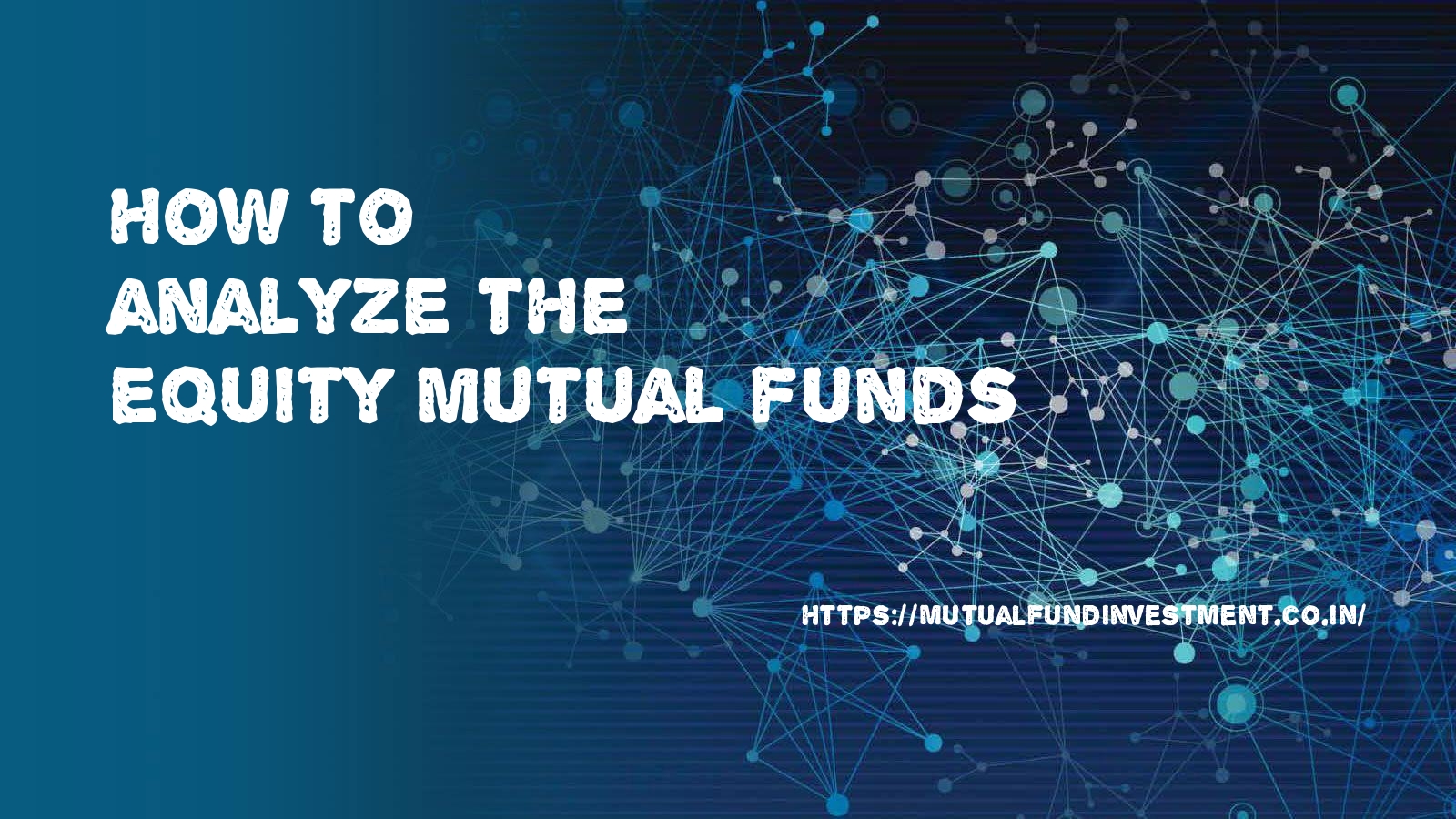There are more than 1000 mutual funds available in India. We have to select the best for long term investment. Investment for more than 7 years considered as long term investment. We can select equity mutual funds for long term investment. In the blog, we would discuss how to select best fund from set of mutual funds. How to analyze the equity mutual funds for long term investment.
Expense Ratio :
Expense ratios is fund management fees changed by mutual fund house. In case the fund manager charges and management fees are high, it would increase the expense ration. So, the higher the expense ratio, it would impact the returns from the fund. We have to select the fund which is lower in expense ratio. Below is list of maximum expense ratio for the equity fund. In case expense ratio is high, avoid the fund. For regular mutual funds, it would be high. For direct mutual funds, it would be less. For index funds, it would be very low.
Large-Cap Stock Funds: 1.00%
Mid-Cap Stock Funds: 1.05%
Small-Cap Stock Funds: 1.10%
Index funds : 0.50 %
Foreign Stock Funds: 1.50%
How to check expense ratio of the Fund in money control. Always select direct mutual funds to avoid unnecessary expense ratio. Go to the fund in money control. It would show the expense ratio of the fund.
AUM & Years of Existence:
Asset under management of the fund and years of existence are important role in the selection process. One should go for a fund which has a proven track record. A fund which has been in existence for more than 5 – 10 years and AUM is more than 1000 crores would be best fit for long term investment. Do not invest the new funds or AUM is less than 100 crores. In case AUM is higher, it would decrease the expense ratio of the fund.
How to AUM of the Fund in money control. Goto the fund in money control. It would show the AUM of the fund.

Scheme vs Benchmark
Compare the funds with index funds. Compare the performance against Nifty index and Nifty Junior index funds. We should always compare the performance of a scheme against its benchmark. Comparing the performance of your scheme with its benchmark would give you a better idea about the performance of the scheme. If the scheme has managed to beat its benchmark, it shows that the fund has done well. If it has managed to beat the benchmark by a big margin, it shows that the fund manager has very good stock-pricing skills. In case Nifty index fund return is 15% and the fund return is 2%, it is clear no for the fund. Compare with benchmark and nifty fund.
MoneyControl gives the comparison with benchmark. You can check in mutual fund aggregator Kuvera also to compare with benchmark.
 Scheme vs Category
Scheme vs Category
We have to compare the fund with it category. In case, we are interested in large cap funds, there are more than 15 large cap funds in the market. We have to compare the fund with other large cap funds. We can look at category average returns to find out whether your fund is an above average performer. We can also compare its performance with some established peers to figure out its standing in the category.
MoneyControl gives the comparison with category. You can check in mutual fund aggregator Kuvera also to compare with category.

Beta :
It measures the movement of the portfolio of a mutual fund with respect to the market as a whole. A beta of 1 indicates that when the market rises by 1 % then the fund will also generate 1% return whereas a fund with a beta of -1, then it indicates that if the market rises by 1% then the fund will fall by 1% and vice versa.
Alpha :
This ratio tells an investor how much extra return the fund is able to generate over market returns. Positive alpha indicates fund’s out-performance while negative alpha represents under-performance. Generating alpha is one of the most important task of fund managers managing active funds.
Sharpe Ratio :
Sharpe ratio shows the risk-adjusted performance of a fund. It shows the return per unit of risk taken. Sharpe ratio takes into account the standard deviation of the investment portfolio. Higher the ratio, the better it is.
Treynor Ratio:
Treynor ratio is also similar to Sharpe ratio but instead of standard deviation, it takes into account the beta of the markets as a whole. Higher the Treynor ratio, the better it is as it shows better risk-adjusted performance.
MoneyControl provides the risk ratio and comparison with its category.

Compare Portfolio Turnover Ratio (PTR)
The portfolio turnover ratio tells you how often the fund manager buys/sells securities in the portfolio. In case of equity funds, it shows the level of trading taking place in the fund. You need to know that whenever an equity share is bought/sold, it attracts transaction charges like the brokerage. Frequent trading going on in a portfolio ultimately increases the expenses and is reflected as a higher expense ratio. It might reduce your take-home returns from the fund. Thus, PTR is an important criterion for fund selection. While choosing a fund, look for one with a lower PTR. If you want to go for a fund with a high PTR, then check whether such high PTR is being justified by way of higher returns.

Exit Load
Exit load to discourage investors from early redemption of the fund mostly 1 year.l. This is the penalty charged by a mutual fund for leaving a scheme early. Exit load normally ranges between 0% (for liquid funds) and 1% (up to 1 year of holding in an equity scheme). Some of the mutual funds has 0% for exit load. Select 0% exit load mutual funds in your category.
You can check the exit load in mutual fund aggregator platform kuvera and other mutual funds websites as well.

MoneyControl, valueresearchOnline, etmoney,kuvera and groww gives rating the mutual funds based on this parameters. Select the top rated mutual funds and analyse it to find the best mutual funds to invest.
Best mutual funds to invest in for long term:
Based on above parameters and risk ratio, we have selected 7 funds for long term investment.
Axis Bluechip Fund – D (G)
Axis Long Term Equity – Direct (G)
Axis Focused 25 Growth Direct Plan
Mirae Asset Emerging Bluechip Growth Direct Plan
Mirae Asset Large Cap Growth Direct Plan
UTI Nifty Index Growth Direct Plan
UTI Nifty Next 50 Index Growth Direct Plan
Confused on selecting mutual funds? Select Passive mutual funds







